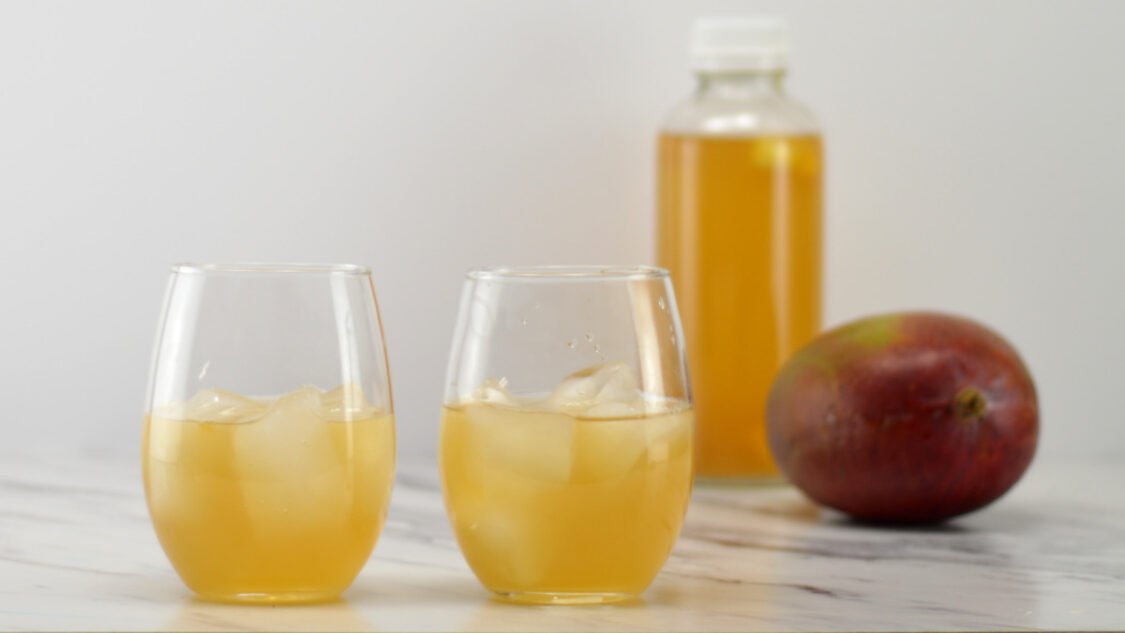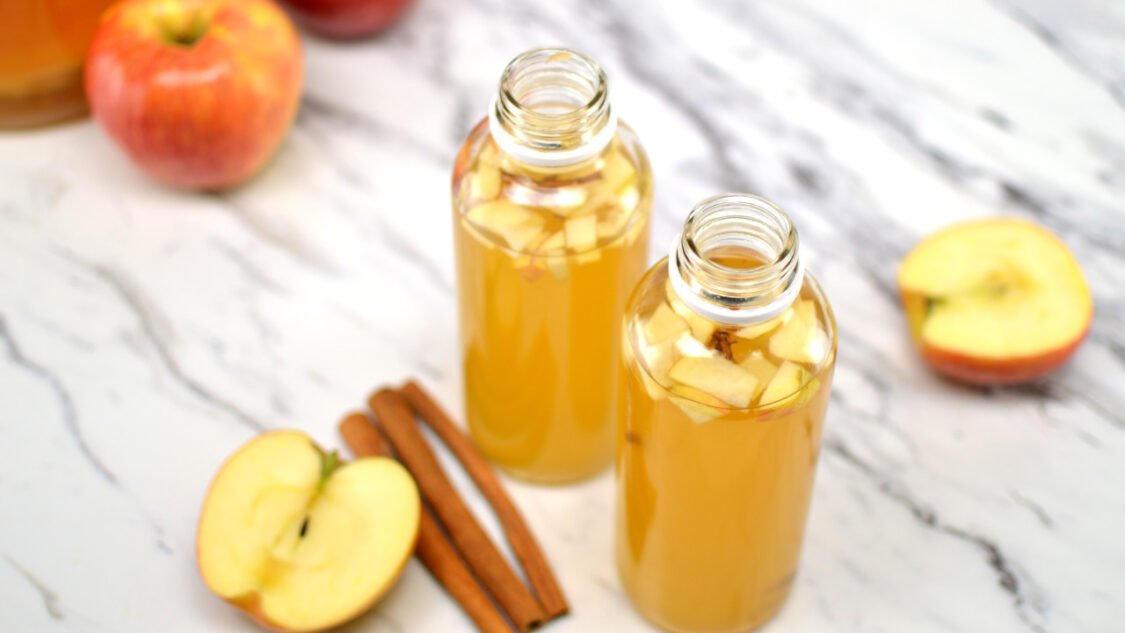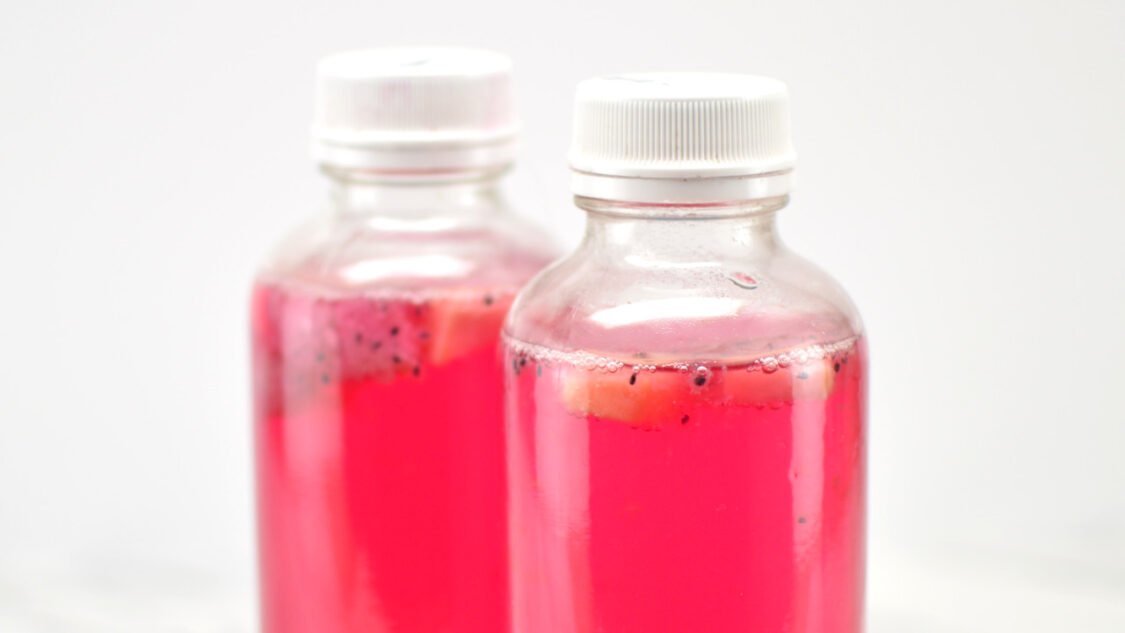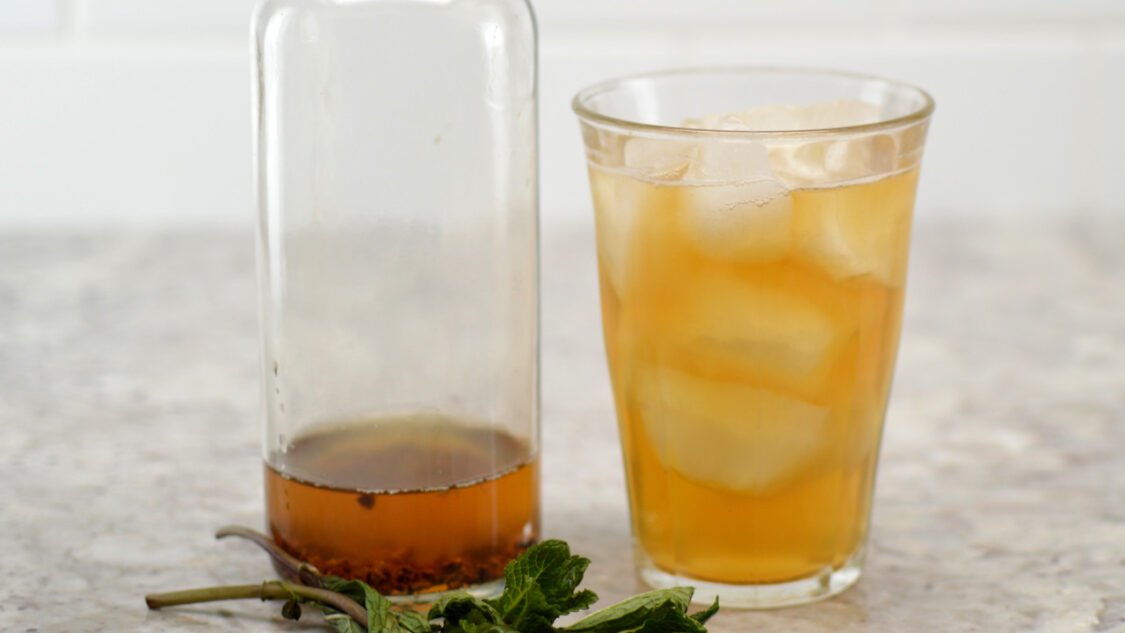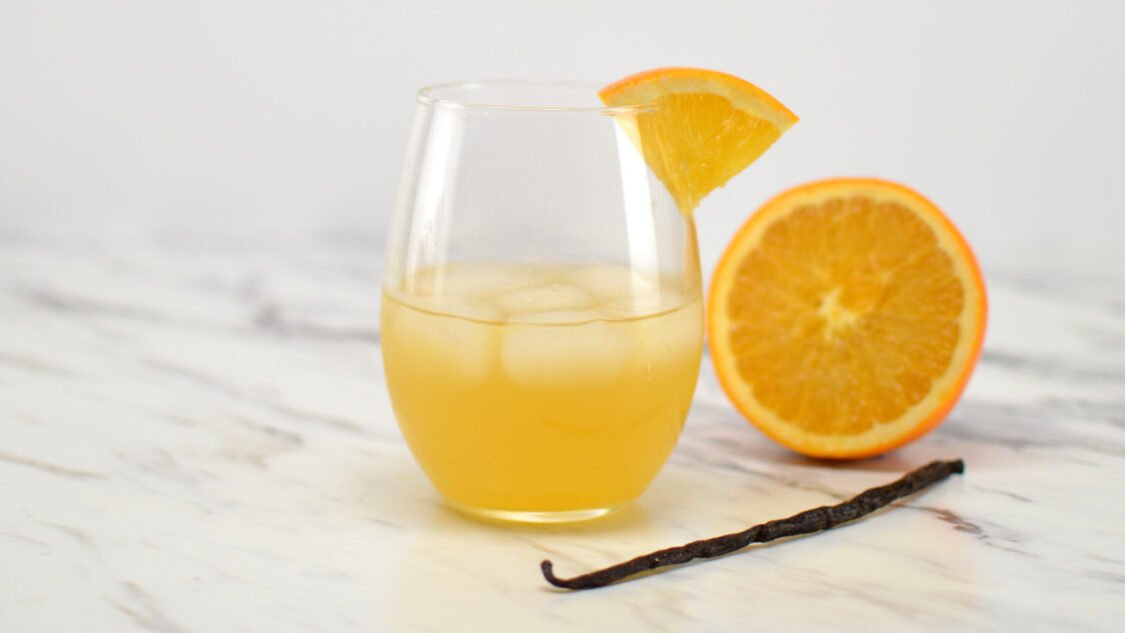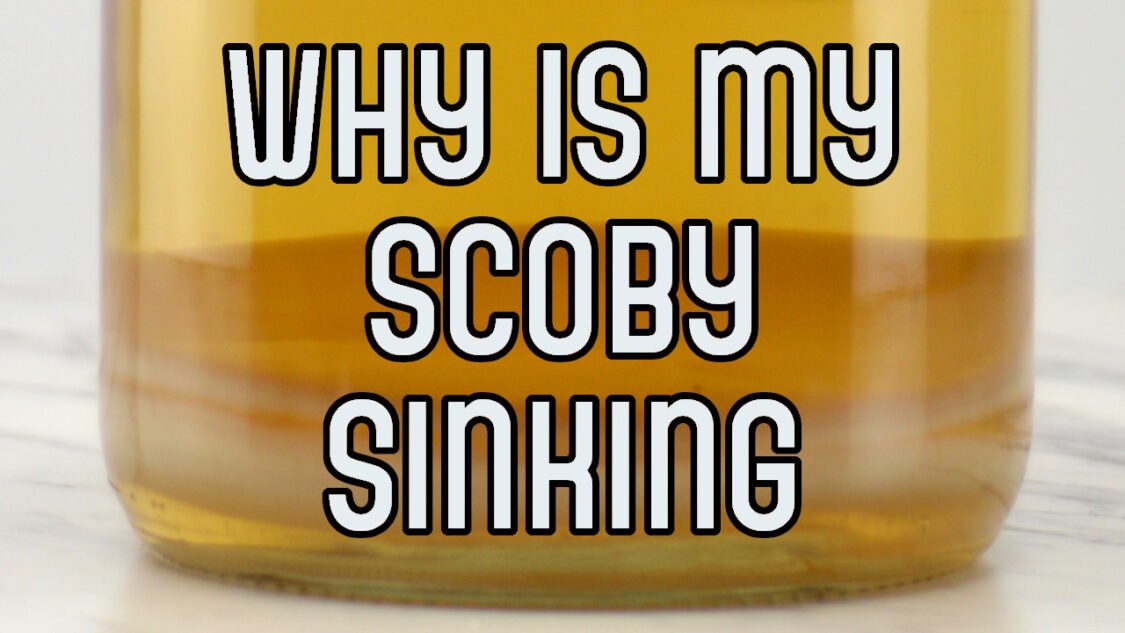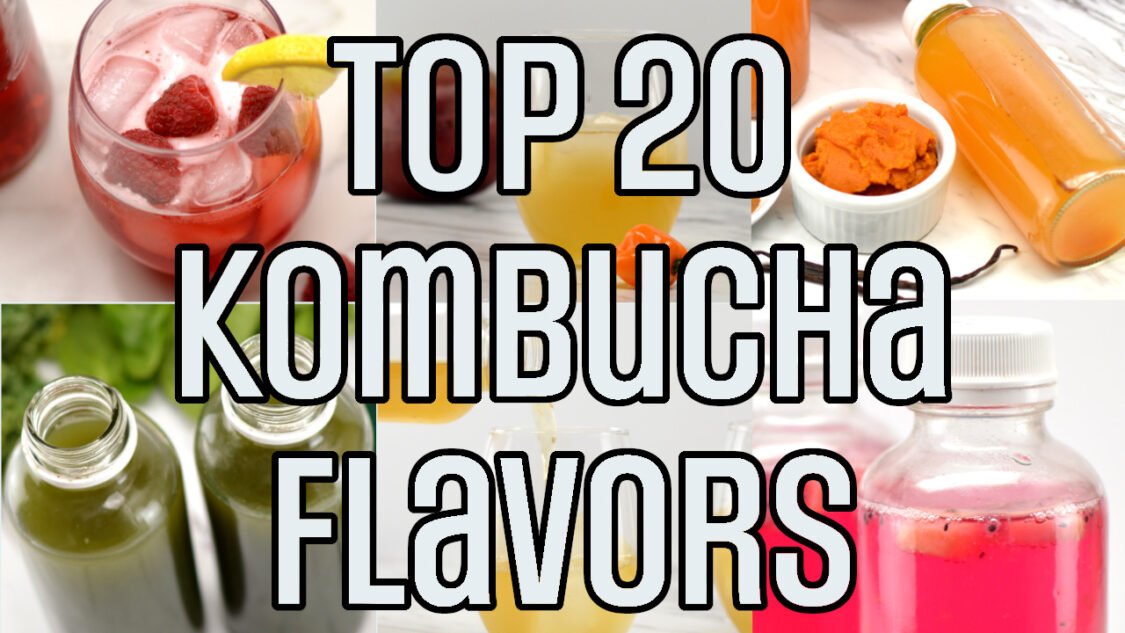Lemon Gingerade Kombucha
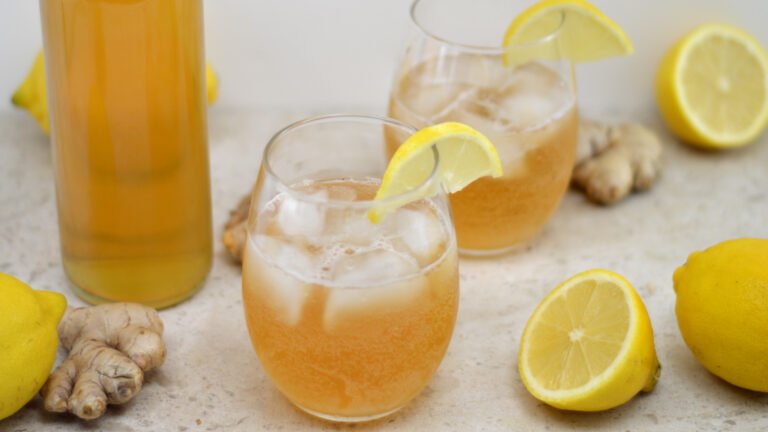
Lemon Gingerade Kombucha was one of the first kombucha flavors I made and it’s still in the rotation since it’s so easy and so good! It combines two of my favorite kombucha flavors in every sip. Who can resist the pungent and slightly spicy aroma of grated ginger interlaced with the bright citrus aromas of lemon.
With its pale gold color it’s perfect for sipping in any season or using as the base for a mocktail or kombucha cocktail. Fresh lemons and ginger are easily sourced all year round so when the urge hits I can make a fresh batch.
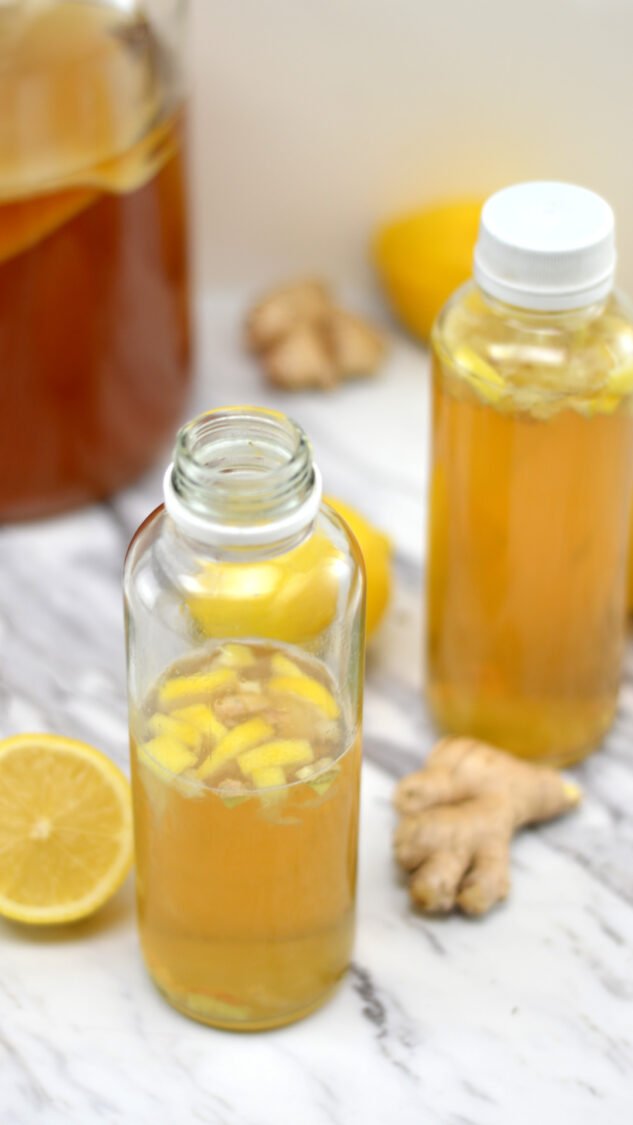
Kombucha Fermentation Overview
There are two fermentation phases when making kombucha:
Primary Fermentation: This is when you transform sweet tea into tart and tasty kombucha. Get all the details at how to make kombucha.
Secondary Fermentation: This is when you carbonate the kombucha by adding flavor and sugars (like lemons and ginger ?) and bottling it.
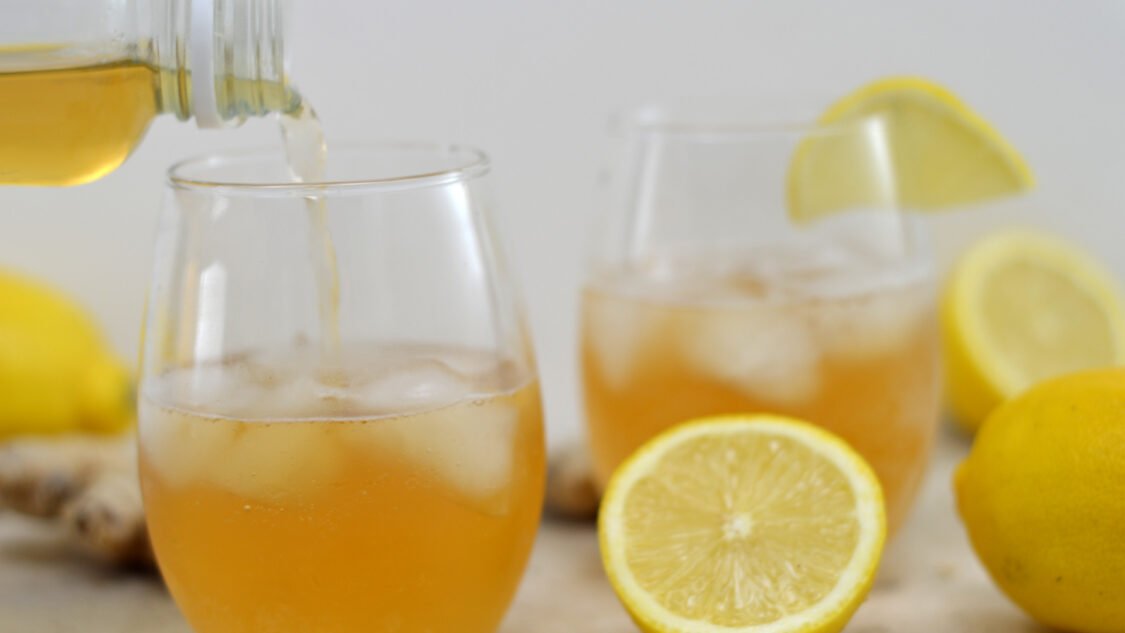
Preparing for Secondary Fermentation
This recipe makes about 7 x 16 fluid ounce bottles of finished kombucha (from a 1-gallon batch of unflavored homemade kombucha aka from your primary fermentation).
Reserve 2 cups (about 16 oz / 0.47L) kombucha and your SCOBY from your completed primary fermentation and set aside – you will use this as your starter for your next gallon batch of kombucha.
With your kombucha starter tea and SCOBY placed aside, you now have enough kombucha left to flavor and fill your bottles. This guide assumes are using 16 oz. glass bottles which are a popular choice for kombucha; however, there are many options for bottling kombucha.

Ingredients to make Lemon Gingerade Kombucha
Kombucha Finished kombucha from your first fermentation is the base to which you will add the blueberry flavors
Lemons: Here we will use all of the lemon: zest, rind and fresh for layers of lemon flavor. Lemon is often described as having the aromas of rose, lavender and pine with a slight herbaceous note. Citral is the compound which contributes to most to the characteristic “citrus” flavor. Citral in lemons can be found in the form of two isomers, neral and geranial (same compound with a different arrangement of atoms in the molecule and therefore different characteristics.)
Ginger: Ginger is an aromatic herb that pairs well with both sweet and savory foods. It has legendary health properties, primary of which is that it’s great at calming an upset stomach with anti-inflammatory properties, so it’s great for sore muscles and aches and pains. In addition, it can help to manage blood sugar, cholesterol, and even might positively impact brain health.
Fresh ginger has slightly peppery and sweet taste, with a pungent and spicy aroma.
Look for firm ginger “hands” with a taut peel. It should not look wrinkled or feel soft. To use, peel the taupe skin off, then slice, chop, or grate. Frozen ginger is typically available in pre-portioned packets that of one teaspoon nuggets. Frozen ginger is a little less intense than fresh ginger and is a really useful keep on hand in for use in short notice. Ground ginger is not as strongly flavored but has a similar warm bite and a touch of sweetness. Fresh or frozen ginger works best in kombucha
Like garlic, ginger mellows when cooked and will become bitter when burned. The exception is that ginger becomes even more spicy when boiled in a syrup. For more info on that check out how to make great mocktails
Sugar: A touch of additional sugar for bacteria and yeast to feed on which creates carbonation (aka fizzy goodness)
How to make Lemon Gingerade Kombucha
Add Flavors: Add chopped lemon and ginger to the bottles.
Bottle: Transfer kombucha to fermentation bottles.
Condition: For 3 to 10 days, until it reaches the carbonation level you like.
Enjoy: Chill in the fridge before serving.
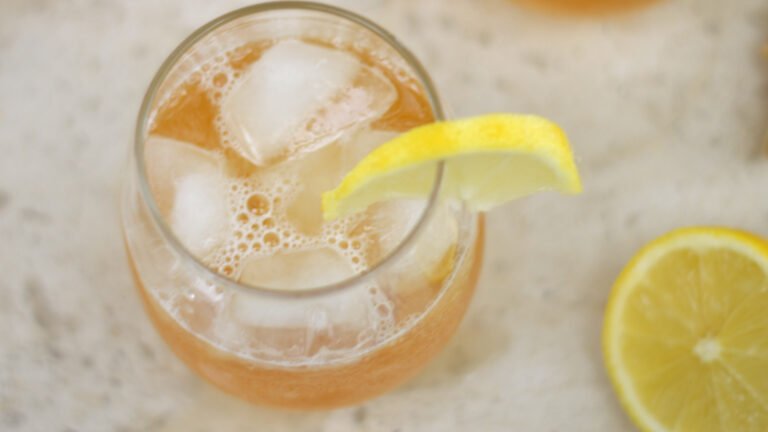
Lemon Gingerade Kombucha Recipe
Yield: 7 bottles • Active time: 20 minutes • Total time: 3 -10 days
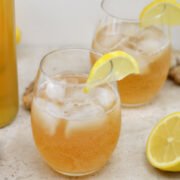
This recipe assumes you are doing a secondary fermentation (flavoring and carbonation) in the bottle. You may also incorporate a third fermentation using the same proportions but following the third fermentation steps.
Ingredients:
1 gallon homemade kombucha from a first fermentation, 3.7 L
2 lemons, zested and sliced into 1/4 pieces (discard seeds)
2 Tbs fresh ginger, finely chopped (about 2 knobs)
7 sugar cubes or 2 Tbs sugar 12 g
Instructions:
Prepare lemons: Zest the lemons then coarsely chop rind and flesh, removing seeds
Prepare ginger: Rinse and finely chop the ginger. I’ve found that peeling is not necessary
Flavor: Mix lemon zest, lemon and ginger. Evenly divide among bottles
Fill bottles: Transfer kombucha into fermentation bottles, leaving about 1 inch empty at the top
Sweeten: Add one sugar cube per 16 bottle or evenly divide sugar between bottles (about 1 tsp per 16 0z bottle)
Cap: Cap the filled bottles and tighten the cap snugly.
Ferment: Place in a dark, room temperature area for 3 to 10 days, until it reaches the carbonation level you like. This process will go faster in warmer climates, and slower in cooler climates.
Enjoy: Chill in the fridge before serving. Homemade Kombucha can be stored in the fridge, tightly sealed, for several weeks.
If desired, you can strain the kombucha as you serve it into glasses to remove the fruit but all of the tart and zesty goodness will remain.
Tips & Tricks:
Make sweet tea for your next batch the night before you flavor and bottling and let it cool on the stove overnight so that you can flavor your kombucha and get your next batch started at the same time.
If this is your first time brewing, it may be helpful to use a plastic water bottle as a gauge. Fill a recyclable plastic bottle with kombucha (leaving 1.5 inches empty at the top). When this bottle becomes rock hard, you’ll know the glass bottles are also ready. This will help you gauge how long it take for kombucha to carbonate your climate and will prevent bottle explosions.
Nutrition Information:
Kombucha Recipes You Might Also Like
Helping you learn to brew kombucha, find inspiration for new kombucha flavors and use kombucha to make kombucha mocktails

